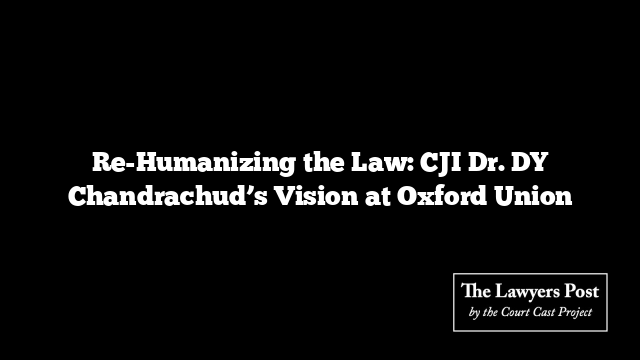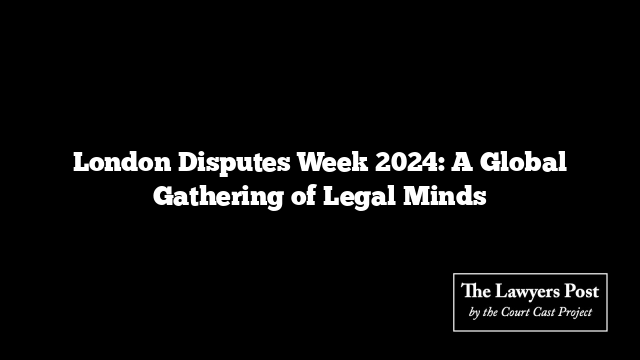On June 4, 2024, Chief Justice of India Dr. DY Chandrachud delivered a thought-provoking lecture at the prestigious Oxford Union Society. With a warm introduction by Supreme Court Advocate Ms. Tanvi Dubey and adept moderation by Mr. Prajwal Pandey, the event delved deep into the essence of the Indian judiciary and its role in humanizing the law.
Dr. Chandrachud began his speech with a poignant narrative from Herman Melville’s “Billy Budd,” highlighting the tragic consequences of rigid legal formalism. This story set the stage for a broader discussion on the purpose of law, which he posited should extend beyond mere orderliness to encompass human dignity and justice.
Reflecting on the dual nature of law, Dr. Chandrachud acknowledged its capacity for both justice and oppression. He stressed the importance of a purpose-oriented approach in lawmaking, cautioning against the state’s tendency to prioritize collective goals over individual rights, often leading to dehumanization.
He identified three primary ways laws can dehumanize: by adopting a paternalistic view of citizens, denying institutional recognition of personhood, and using degrading statutory language. For instance, he critiqued Article 335 of the Indian Constitution, which has been interpreted in ways that undermine the competence of marginalized communities benefiting from affirmative action.
Dr. Chandrachud cited his own judicial efforts to redefine ‘efficiency’ in terms of inclusivity and equal opportunity, thereby fostering greater societal efficiency through diverse representation. He argued that redefining ‘merit’ to include marginalized groups enriches societal transformation and justice.
To combat dehumanization, Dr. Chandrachud advocated for re-humanizing the law. This involves eliminating humiliating statutory language, ensuring full institutional recognition of individuals, and balancing individual rights with state purposes. He emphasized the incremental nature of legal improvements and the pivotal role of judges in adopting a humanizing approach to adjudication.
He outlined five core components of a humanizing judicial model:
- Judicial Review: Ensuring laws do not victimize individuals, as seen in the Anuj Garg v. Hotel Association of India case.
- Procedural Justice: Upholding fairness in legal processes, exemplified by the Supreme Court’s stance in the Media One case.
- Lived Experiences: Understanding the unique circumstances of parties involved in legal disputes.
- Humanizing Language: Using empathetic and respectful language in judicial pronouncements.
- Justice Delivery System: Enhancing accessibility and efficiency through technology to reduce the dehumanizing aspects of legal procedures.
Dr. Chandrachud concluded with an optimistic view of technology’s role in the judiciary, advocating for the careful integration of artificial intelligence with robust safeguards to ensure it enhances rather than detracts from human-centered adjudication.
This lecture not only illuminated the intricate relationship between law and humanity but also underscored the ongoing efforts required to make justice truly accessible and compassionate.





